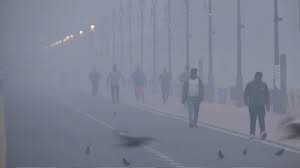
The air quality in India’s national capital, Delhi, remains a matter of concern as it continues to fall within the ‘very poor’ category. The latest data from SAFAR India reveals an Air Quality Index (AQI) of 336, prompting officials to implement measures to address the ongoing issue.
In the early hours of the morning, parts of Delhi were shrouded in haze due to the deteriorating air quality. Specifically, the Delhi University area and Pusa registered ‘very poor’ air quality, with AQI figures of 391 and 311, respectively, at 7 am. The IIT Delhi region recorded an AQI of 329. Even at the Airport (T3) and Mathura Road, the air quality was classified as ‘very poor,’ with AQI values of 339 and 362, respectively, according to the data at 7 am.
This concerning scenario comes as the Commission for Air Quality Management (CAQM) announced new regulations set to take effect on November 1. Under these rules, only electric, Compressed Natural Gas (CNG), and Bharat Stage VI (BS VI)-compliant diesel buses will be permitted to operate between Delhi and towns in Haryana, Uttar Pradesh, and Rajasthan that fall within the National Capital Region (NCR).
A notification issued by CAQM stated, “All state government bus services between any city/town in the state of Haryana and Delhi shall be operated only through EV/CNG/BS-VI diesel buses w.e.f. 01.11.2023. This shall also be applicable for bus services being operated by State PSUs and private entities, etc.”
The persistently ‘very poor’ air quality in Delhi has not gone unnoticed by residents and commuters. A pedestrian in Delhi’s Mayur Vihar expressed concerns about breathing difficulties caused by pollution, stating, “It feels a bit uncomfortable to breathe while running due to pollution now as compared to in the summer months. I face congestion. We need to remain careful and take all precautions.”
Another resident noted that air quality has been worsening since October, causing slight discomfort during morning walks. These observations highlight the urgent need for sustained efforts to address air quality issues and promote cleaner modes of transportation in the region.
Sources By Agencies

